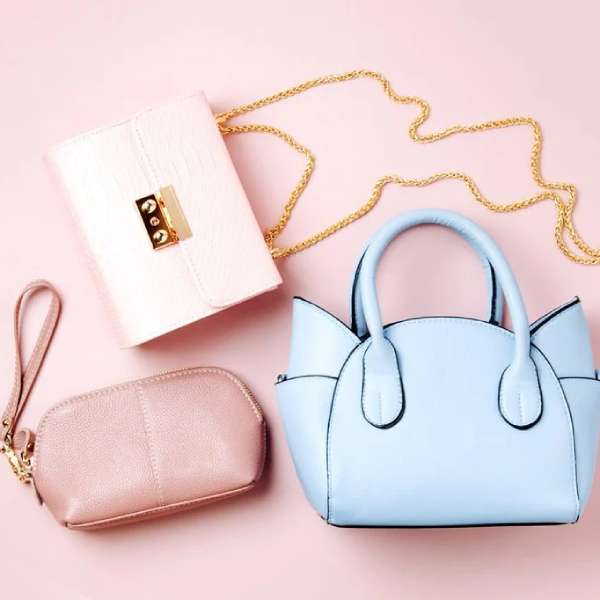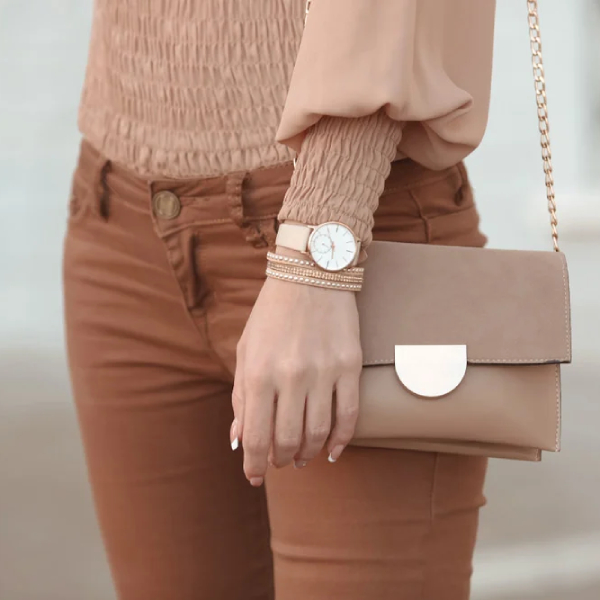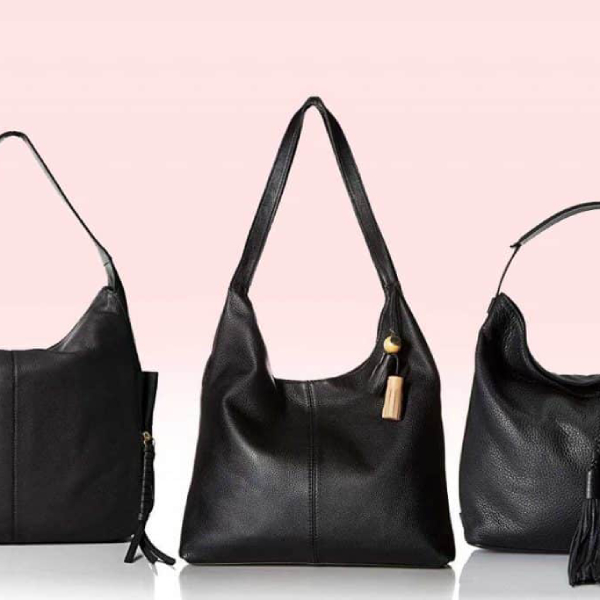The Evolution of Terminology: Purse and Handbag Differences
The terms ‘purse vs handbag’ have a rich history. Initially, ‘purse’ meant a small bag for carrying coins. Over time, it evolved to refer to larger accessories, especially in the US. But in the UK, a ‘purse’ still implies a compact size. Handbag, on the other hand, emerged as a term for larger bags with space and organization as key features. Designers like Louis Vuitton helped shape this concept. The fashion community often prefers ‘handbag’ for high-end, fashionable items.

In America, ‘purse’ and ‘handbag’ often mean the same thing. This wasn’t always the case, but their uses have blended. Yet, some insist on distinct roles. Handbags denote practicality with room for more items, while purses suggest a focus on essentials.
Knowing the history helps us choose correctly between a purse vs. handbag. It guides us to match bags with our needs, be it a stylish clutch or a functional tote. It also highlights the cultural impact on language, fashion, and personal style. Understanding bag history helps us select the best handbag for everyday use, ensuring it reflects our personal style while meeting practical needs.
Size and Portability: Choosing the Right Accessory for the Occasion
Choosing between a purse and a handbag hinges on the event and your needs. Here’s your guide to select the ideal accessory for any occasion based on size and portability.
Small and Chic: When to Opt for a Purse
A purse shines for short outings where style takes the lead. It’s perfect for dinner dates, theater evenings, or any high-class affair. Here are situations fully suited for a purse:
- Evening events requiring minimal items.
- Professional meet-ups where only essentials are needed.
- Social engagements where large bags may seem cumbersome.
Bigger and Better: The Versatility of Handbags
Handbags come into play when you need more space. They hold everything from a day planner to a spare cardigan. They’re your go-to for longer days or when multiple items are a must. Here’s when a handbag is your best bet:
- Workdays that call for laptops, documents, and personal items.
- Travel trips where you need quick access to a variety of essentials.
- Day-long excursions that might include shopping or carrying extra things.
In conclusion, assess the event before picking your accessory. Smaller purses pair well with light-travel days. Handbags fit the bill for more demanding scenarios where more storage is key.
Functional Design Elements: Compartments and Carrying Styles
When choosing between a purse and a handbag, consider the functional design elements. These aspects dictate not just capacity but also convenience and ease of use.
Compartments Offer Organizational Ease
A key feature distinguishing handbags from purses is the organization they provide. Handbags often boast multiple compartments. These divisions allow for neat storage of items like tablets, makeup, and water bottles. In contrast, purses tend to have one main area, suited for holding only the essentials such as keys, cash, and cards.
Carrying Styles to Suit Your Comfort
Carrying styles vary greatly between purses and handbags. Purses often feature a simple strap for shoulder carrying or no strap at all, demanding hand-carrying. Handbags offer more diversity in carrying styles. Options include over-the-shoulder straps, crossbody straps, or top handles. This versatility in handbags ensures comfort regardless of the items’ weight or bulkiness. French handbag brands excel in offering diverse carrying styles, making them a popular choice for fashion enthusiasts. Their designs combine elegance and functionality for every occasion.

Choose Based on Activity and Need
Your daily agenda should influence your decision. Opt for a purse with just enough space for vital items on light-duty days. For busier days, a handbag with ample space and multiple carrying options would serve better. Always align the bag’s functionality with your planned activities to ensure practicality and style go hand in hand.
Fashion Statements: Styling the Accessories for Different Looks
Choosing the right bag isn’t just about function. It’s also about fashion. A bag can make or break an outfit, so picking the perfect purse or handbag is key to nailing your look.
Match Your Bag to the Occasion
For formal events, opt for sleek purses in premium materials. Think satins or leathers with minimalistic designs. These add a touch of elegance without overwhelming your outfit. At casual gatherings, a trendy crossbody or a colorful tote can add personality and flair to your ensemble.
Balance Your Outfit
If your clothes are bold, choose a simple, understated bag. A neutral-colored handbag can ground an outfit with lots of patterns or bright colors. Conversely, a statement purse can spice up a plain look. Bright colors or unique textures can turn a simple bag into a conversation starter.
Reflect Your Personal Style
Your bag should be an extension of your style. Love vintage? Try a classic structured handbag. If you’re all about the latest trends, snag a bag that’s hot this season. Remember, the key to a great accessory is how well it expresses your unique taste.
Size Matters for Proportion
The size of your bag should complement your body shape. Petite individuals may want a smaller purse to avoid being swamped. Taller folks might opt for a bigger handbag to maintain proportion. Always pick a size that looks and feels good to you.
Seasonal Shifts
Seasons change, and so should your bag choices. Light fabrics and pastel colors work great in spring and summer. Heavier materials and deeper hues are perfect for fall and winter. Your bag can be a great way to nod to the season while staying stylish.
Quality Over Quantity
Invest in quality bags that stand the test of time. A well-crafted leather handbag can be a staple for years to come. A well-maintained purse can outlast seasonal trends and elevate any look.
In short, the right purse or handbag does more than carry your essentials. It completes your outfit, signals your sense of style, and adapts to your needs for all occasions. Use these tips to choose accessories that are both functional and fashionable.
Cultural and Regional Variations in Handbag Terminology
Understanding how culture and region affect the terms ‘purse’ and ‘handbag’ is key. These words often mean the same accessory, yet differences exist based on location. In America, they tend to interchange ‘purse’ and ‘handbag’. However, in the UK, ‘purse’ usually means a small bag for money – think coin purse. Elsewhere, ‘handbag’ might imply a more substantial size with more compartments. The distinction between ‘purse’ and ‘handbag’ is evident when considering luxury brands like a Jimmy Choo handbag, which typically denotes a stylish, spacious accessory common in the UK.
America’s Preference for ‘Purse’
Americans often favor the term ‘purse’. It’s common to call any women’s bag a purse, whether small or large. This usage broadens the meaning of ‘purse’. It covers everything from tiny pouches to oversized totes.
British Distinction Between ‘Purse’ and ‘Handbag’
In the UK, ‘purse’ and ‘handbag’ do not overlap much. A ‘purse’ is for carrying coins and small essentials. A ‘handbag’ is larger, for more items, and often has a strap.
Variations Beyond America and the UK
Language varies across English-speaking countries. In some places, ‘handbag’ might mean a high-fashion accessory. In others, ‘purse’ could simply refer to a casual, strapped container.

Fashion Industry Influence
The fashion industry shapes terms too. Designers and brands prefer ‘handbag’ for stylish, high-end products. This choice hints at luxury and often carries a higher price-tag.
In essence, ‘purse’ and ‘handbag’ carry regional baggage. They adapt to cultural norms, and the fashion world cements these terms further. Next time you pick a bag, consider your location and how terms change with it.
Practical Considerations: Material, Durability, and Maintenance
When choosing between a purse and a handbag, the material is crucial. It affects durability, style, and care needs. For example, leather offers longevity and classic appeal but requires regular maintenance. Synthetic materials like nylon or polyester are less expensive and easier to care for, but might not provide the same elegance or durability.
Durability is another key factor. A well-made bag should withstand regular use without showing quick wear. Check the quality of seams, zippers, and latches. They should be sturdy and operate smoothly.
Finally, consider maintenance. Leather bags often need conditioners to maintain their look. Fabric bags might just need occasional washing. Choose a bag that fits your lifestyle and your willingness to maintain it.
Selecting the right materials, checking for durability, and understanding maintenance requirements will ensure your bag remains functional and stylish for years.
Factors Influencing Your Choice: Occasion, Content, and Budget
Choosing the right purse or handbag depends on several factors.
Consider the Occasion
Your choice largely depends on where you’re going. For formal events, you might opt for a sleek, small purse. It fits essentials like lipstick, a phone, and cards. For daily work or longer outings, a handbag is better. It can carry items like books, a tablet, or extra clothes.
Assess the Content You Carry
Think about what you need to take with you. Purses are ideal for carrying just the essentials due to limited space. Handbags offer more room and organization for more items. This makes them useful for busy days or travel.
Plan According to Your Budget
Both purses and handbags come in various price ranges. Set a budget before shopping. Consider durability and functionality within your price range. Sometimes, spending a bit more on quality can save money long-term.

